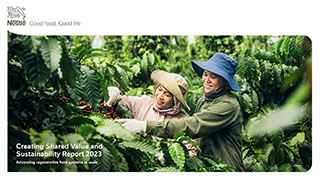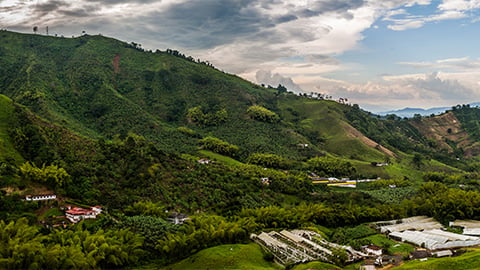Materiality - identifying key sustainability issues

We conduct a formal materiality assessment every other year to ensure we prioritize issues with the greatest impact on our business, communities and the environment, and those that matter most to our stakeholders.
Material issues and sustainability
We contract with an independent third party to conduct a thorough materiality assessment of our business. In that way, we can assure contributing stakeholders of complete confidentiality and full impartiality in the findings.
Our most recent materiality assessment was carried out in 2022, and reveals how concerns around ecological impacts, natural resources, biodiversity and ecosystems have become critical elements in our business decisions. The assessment included desk research and interviews with 55 internal and external stakeholders. Internal stakeholders include executive board members, functional heads and market heads, while external stakeholders include suppliers, investors, customers, NGOs and business associations.
Our materiality process
Material topics selection
Sustainability Accounting Standards Board (SASB) aligned material topics selected
Establish external context
AI software analysis and analysis of environment
Stakeholder engagement
55 interviews conducted and surveys collected
Materiality assessment
Quantitative and qualitative input assessed
Review strategies
Identify risks and opportunities in results and adjust priorities accordingly
Publish in CSV and Sustainability Report
Share results internally and externally
Our materiality assessment
The results of our materiality assessments help us identify risks and opportunities and support our decision-making on where to focus our resources. The findings are fully integrated with the Nestlé Enterprise Risk Management process, to help give us essential short- and long-term visibility on key topics.
To align with new reporting mandates (including the European Union’s new Corporate Sustainability Reporting Directive (CSRD) and Swiss Code of Obligations, Article 964, for non-financial ESG reporting), we have updated how we present materiality topics.
Our materiality matrix
We tailor our activities based on the results of the materiality assessment, aiming to address the issues identified as being most material to our business and stakeholders. These issues should not be viewed in isolation – they are increasingly interconnected and can often impact each other.
That is why we are moving more toward a more integrated, holistic approach to managing sustainability, developing ambitious goals to advance the health of our planet, drive societal progress and support an equitable and healthy food system.
The assessment results are plotted on a materiality matrix to show both the degree of stakeholder interest and potential business impact.
Major |
Water management Ecological impacts GHG emissions |
Health & nutrition Environmental & social impacts of ingredient supply chain Product quality & safety |
||
|---|---|---|---|---|
Significant |
Employee health & safety Physical impacts of climate change Access & affordability Product labeling & marketing |
Circular economy Human rights & labor practices Employee acquisition, talent management & retention Employee engagement, diversity & inclusion |
Packaging lifecycle management |
|
Moderate |
Animal welfare |
Business ethics Community relations |
||
Negligible |
Governance structures & mechanisms |
Data privacy management |
Negligible | Moderate | Significant | Major |














